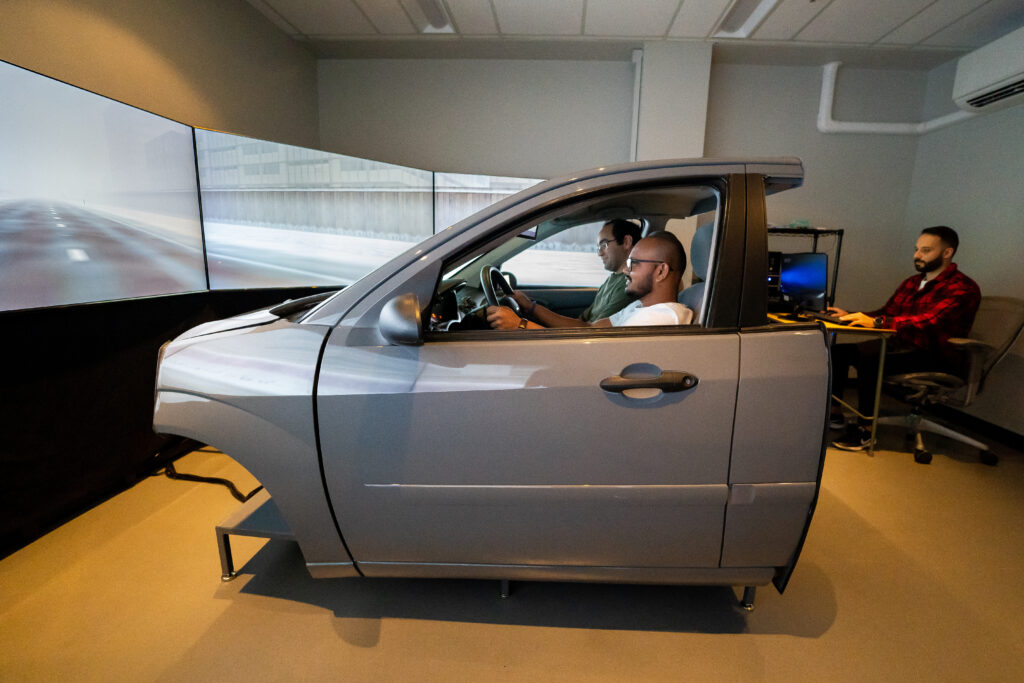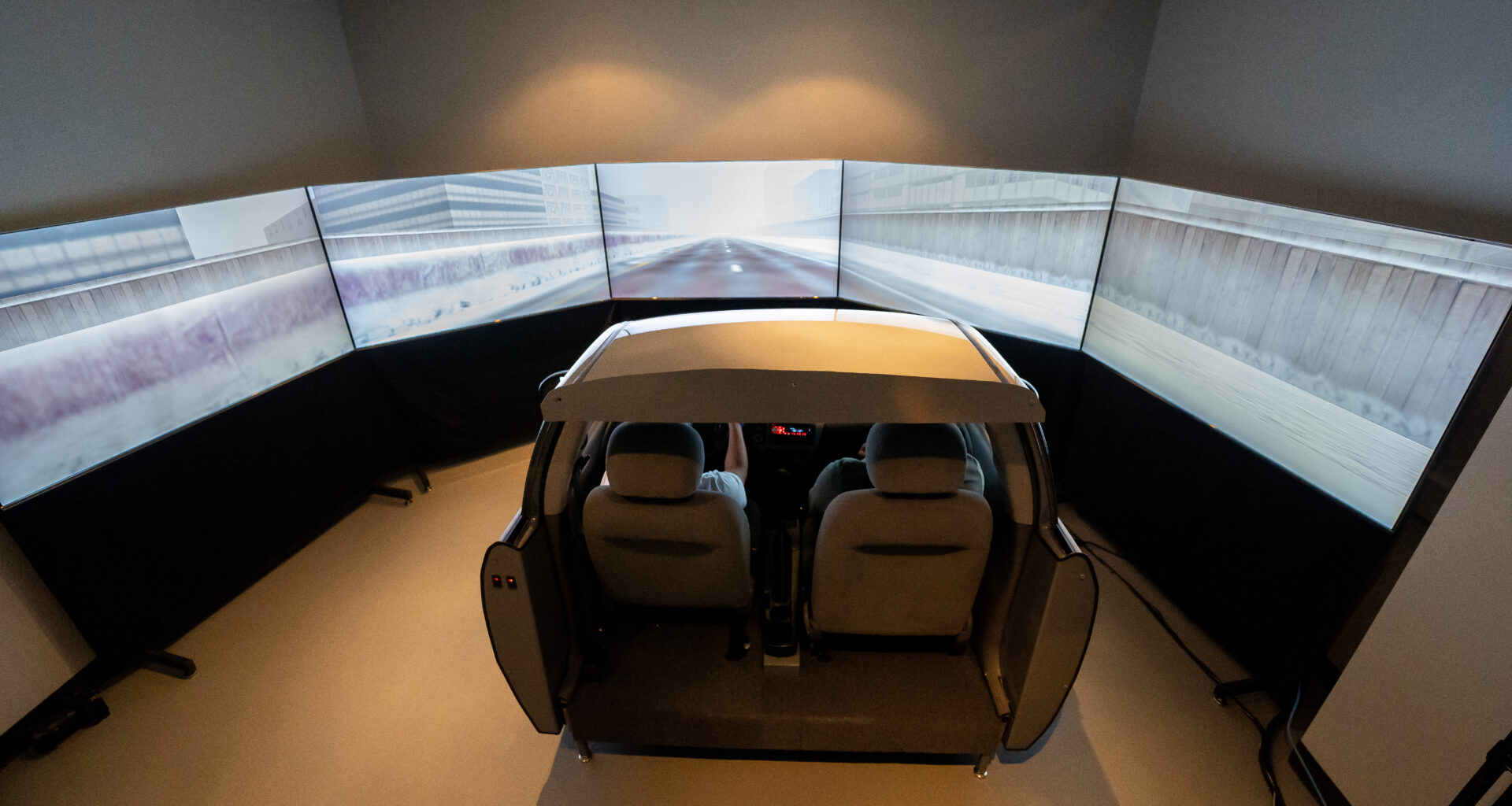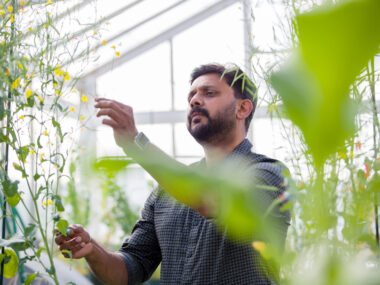Written by Jacquie Moore, BA’97
There will come a day when you glance over at the driver in the lane beside you on the highway to discover that they are asleep. Or eating a plate of spaghetti. Or perhaps not present at all.
Indeed, where driverless cars were once the stuff of a bizarro Jetson’s world, they are now an increasingly irrepressible part of ours. In 2018, the City of Calgary participated in a pilot project to gather data on the first autonomous passenger shuttle in Western Canada; the ELA (electronic autonomous shuttle) successfully carried up to a dozen people at a time between the Calgary Zoo and Telus Spark. In Ontario, a 10-year pilot project launched in 2016 allows regular folk to conditionally “drive” automated vehicles that manage most safety-critical driving functions (with the crucial caveat that the driver must be ready to always take control of the vehicle). And, for the past couple of years, California tech company Gatik has been making completely driverless deliveries for Canadian supermarket chain Loblaws.
Still, it’s a nebulous time: complex technology combined with conflicting messages from automakers, lawmakers and industry have endlessly stalled the commercialization of self-driving cars. That’s not necessarily a bad thing — before we rush to give up the drivers’ seat, we have important questions that researchers such as Dr. Alexandre de Barros at the Schulich School of Engineering (SSE) are both asking and answering.
A professor and researcher who specializes in transportation safety and security, de Barros, PhD’01, and his students are collaborating in SSE’s Road Safety Research Lab to test theories, gather data and strive for deeper understanding of driver behavioural responses to design, operations, policy, weather and technology. A major focus in the Lab right now is the evaluation of new technology, including artificial intelligence (AI) and its impact on driving behaviours.
“How will a driverless car respond to a human driver?”
Dr. Alexandre de Barros, PhD’01
“We are in a transition time between human drivers and AI drivers,” says de Barros. It’s a unique stage of change during which, as more driverless cars inevitably begin to take to the roads, human drivers will be faced with a potentially unsettling reality. “How will a human driver react to seeing a car with no driver on the road?” asks de Barros.
He says it’s one thing for two humans to respond to one another on city streets — and likewise for an AI program to respond to another AI program — but, “how will a driverless car respond to a human driver?” Right now, he says, “we look at other drivers to ensure they see us on the road, but there’s going to be a long period where AI will have to be programmed to react to humans. How do we do that?”

The researchers engage the lab’s state-of-the-art driving simulator to test and evaluate such critical 21st-century problems. The partial Ford Focus cab is set in front of a realistic, virtual roadway display; it enables users to test new driving technology that warns people of issues on the road ahead and not only whether they work, but if such information is cognitively helpful to drivers or not. “Human factors are really important as we pave the way for autonomous vehicles,” says de Barros.
A recent study in the lab by PhD candidate Iyad Sahnoon asked participants to answer questions about their behaviours after “driving” the simulator, which used Connected Cruise Control (CCC) to provide detailed messages about upcoming issues on the road. CCC is an emerging, transitional technology that falls between human and AI and supports and informs driver decisions.
That study, and others in progress, will help de Barros and his team continue to keep City of Calgary planners informed of potential infrastructure, policy and other emerging issues as driving-tech advancements continue to be made.
When the rubber hits the road, sans driver, we’ll be ready for it.




